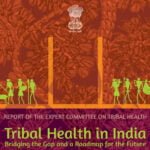Maharashtra, the largest state economy in India, is also the second most populous and the third most urbanized state. However, despite its economic prowess, the state faces significant interdistrict disparities and struggles with its healthcare sector. The public health system is inadequate in terms of both its coverage and the number of hospitals accessible to communities. Both rural and urban areas are witnessing a decline in the utilization of government hospitals for inpatient care. Government facilities suffer from a lack of healthcare providers, a limited range of specialists, overcrowding, and poor service quality. Compounding these challenges, the private hospital sector is twice the size of the public sector, further exacerbating geographic access disparities.
The systemic vulnerability of the healthcare system has been starkly highlighted during the COVID-19 pandemic in Maharashtra. To avert severe shortfalls, there is an urgent need for increased recruitment and additional posts in the healthcare sector. Maharashtra has a progressive staff training policy and a conducive institutional framework, but there is a dearth of public administration training for health department officers. Collaboration between the medical education and public health departments is necessary to ensure the continued professional development of doctors and nurses, as well as to enhance the availability of specialists in district and subdistrict hospitals.
Addressing these challenges requires a transformational approach and a substantial increase in government expenditure on health. It is crucial to build a robust healthcare system that offers improved access to all citizens and can effectively manage public health emergencies. Moreover, the focus should be on bridging the gaps in healthcare infrastructure and ensuring the availability of skilled healthcare professionals throughout the state. By investing in training programs, expanding the reach of hospitals, and enhancing the quality of services, Maharashtra can strive towards a more equitable and resilient healthcare system that meets the needs of its diverse population.
Source: Asian Development Bank



